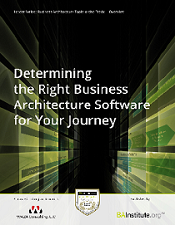For some time now I have been promoting the idea that the practice of business architecture is not about creating blueprints and models but applying a set of tools and techniques to form broader perspectives, create deeper insight, and solve business problems. If business architecture is a practice, then what is its portfolio of services and how do you create them?
Start with three best practices
There are three basic best practices for service development that lead to a powerful service portfolio.























